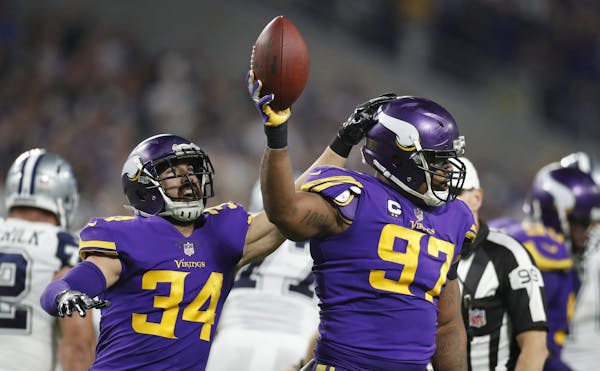NFL general managers shattered this year the previous draft record of 34 trades, with Rick Spielman making seven of his own moves for the Vikings. The first moved up seven spots to select college phenom running back Dalvin Cook in the second round.
Trading up for a running back had become taboo for a while. Personnel evaluators moved up only twice in the last three drafts, for Melvin Gordon and Terrance West, to add to the backfield.
That changed last weekend when a strong running back class enticed the Vikings and four other teams to trade up for ball carriers.
But how often does it work out?
Pretty well if you're trading up in the first round. San Diego took a budding star in Gordon after moving up to the 15th-overall pick in 2015. Same for the Saints and Mark Ingram in 2011. The Rams also ended up happy after trading up for Steven Jackson in 2004′s first round.
A review of running backs acquired by teams trading up since 2000 shows those backs are measurably more effective than other running backs, according to an Approximate Value metric created by Pro Football Reference. AV is a compound measurement based on games played and started, key stats, individual awards and team wins.
About 37 percent of those RBs acquired via trade up (10 of 27) currently have or finished careers with a 20 AV or better. That's compared to about 25 percent for all drafted running backs within the past two decades, according to the Tampa Bay Times. A back like Trent Richardson can accumulate 3,000 combined yards in 46 games and still only register an 18 AV for his career.
The second round hasn't been as fruitful as the first for ambitious teams. Cook would be the first running back acquired via second-round trade up to make much of an impact in the NFL since 2000. His second-round trade up predecessors include unheralded players like Mikel Leshoure (2011), Daniel Thomas (2011), Toby Gerhart (2010), Ben Tate (2010) and Montario Hardesty (2010).
Many thought Cook to be a first-round talent before he fell to the Vikings (41st overall), and he'd be the first second-rounder to register an Approximate Value above '20′ from the group mentioned above. Below are all backs acquired through a draft trade up since 2000, including their career Approximate Values and round drafted. Green indicates an average to successful pick, yellow for below average and red for a failure.
Running backs acquired via draft trade up (2000-2017)
The Vikings sent away a fourth-round pick in the trade because they have first-round expectations of Cook, seeing him as a future every-down back with potential to take over games.
"We felt that he was definitely one of the top two running backs in this class," Spielman said. "He has great balance, great vision. I think watching him catch the ball out of the backfield and the explosive plays he makes out of the backfield as a receiver are another threat. There's always going to be some things these running backs have to clean up like pass [protection] and things like that. But, overall as a talent with the ball in his hands and as a receiver, we felt he was one of the most complete backs in this draft."

Live: Wild wrap regular season vs. Seattle, follow on Gameview
Kansas adds AJ Storr after he led Wisconsin in scoring this past season

How Edwards cooks up the Timberwolves' positive chemistry
Miami Marlins at Chicago Cubs game postponed because of rain in the forecast

